| Necturus beyeri | |||||||||
| Gulf Coast Waterdog | |||||||||
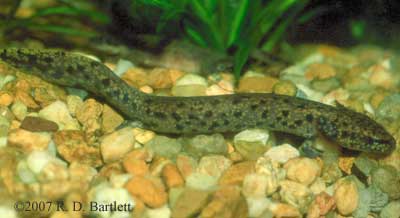
|
|
||||||||
| N. beyeri, Pearl River County, Mississippi |
Taxonomy
This species is under some taxonomic dispute. It was once thought that N. beyeri and N. alabamensis were subspecies because they hybridize. They are now recognized as separate species. It is also thought that N. beyeri could represent a species complex and may be separated into multiple species eventually.
Description
This medium sized waterdog is heavily spotted above, below, and on the sides. The ground color is brown, and many specimens have a yellow speckling covering the body, giving it a light appearance. Like all Necturus, this species has four toes on all feet and bright red external gills. The larvae have no stripes and are much like miniature adults in color and pattern. Adults are 16-22 cm (6-8.5 in) in length.
Range
The western population is located in eastern Texas to adjacent Louisiana, while the eastern population is found in western Louisiana up through central Mississippi.
Habitat
This waterdog is found in small to large streams with an abundance of leaf beds and cover over sandy substrates, and can be very abundant in these habitats. At some locations in Louisiana, this species is known to occur only in leaf beds situated in the portions of streams with a slower current than the rest of the stream. At other sites, this species is found beneath more substantial pieces of cover (rocks, overhangs, etc.) or in burrows. N. beyeri can be captured with dip nets and minnow traps.
Comments
This species may be affected by pollution and siltation. They are not often caught during warm weather, suggesting that they aestivate in the summer months.
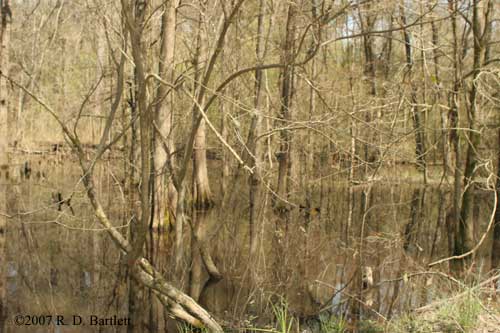
Necturus beyeri habitat, Cherokee Co., Texas.
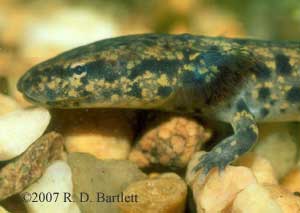 Necturus beyeri, Pearl River County, Mississippi. |
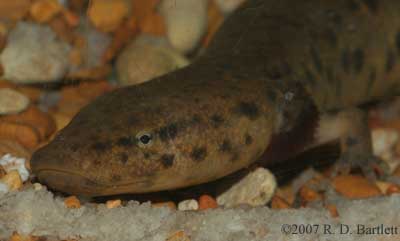 Necturus beyeri, Cherokee Co., Texas. |
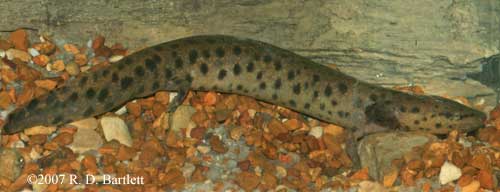
Necturus beyeri, Cherokee Co., Texas.
References
Bartlett, R.D. and P. Bartlett 2006. Guide and Reference to the Amphibians of Eastern and Central North America (North of Mexico). University Press of Florida: Gainesville, Florida.
Bishop, S. C. 1943. Handbook of Salamanders. Comstock Publishing Company: Ithaca, NY.
Petranka, J. W. 1998. Salamanders of the United States and Canada. Smithsonian Institute Press: Washington DC.
Text © 2009 Ryan St. Laurent
